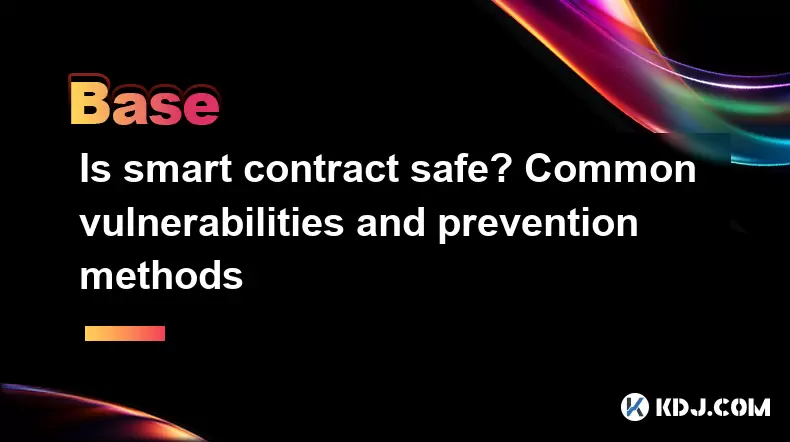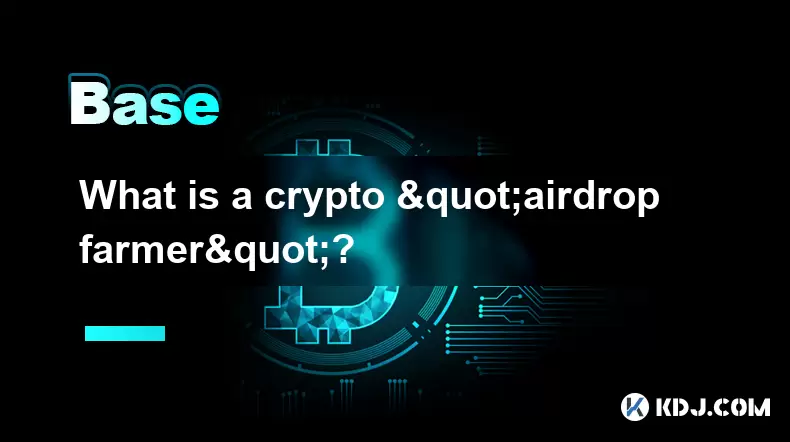-
 Bitcoin
Bitcoin $116000
-1.75% -
 Ethereum
Ethereum $3629
0.15% -
 XRP
XRP $3.096
-1.32% -
 Tether USDt
Tether USDt $1.000
0.01% -
 BNB
BNB $762.2
-1.05% -
 Solana
Solana $178.5
-4.53% -
 USDC
USDC $1.000
0.04% -
 Dogecoin
Dogecoin $0.2276
-4.74% -
 TRON
TRON $0.3138
1.98% -
 Cardano
Cardano $0.8056
0.18% -
 Hyperliquid
Hyperliquid $42.05
-2.98% -
 Stellar
Stellar $0.4185
-1.32% -
 Sui
Sui $3.654
-1.45% -
 Chainlink
Chainlink $17.54
-2.69% -
 Bitcoin Cash
Bitcoin Cash $526.2
3.41% -
 Hedera
Hedera $0.2382
-2.12% -
 Avalanche
Avalanche $23.21
-2.08% -
 Litecoin
Litecoin $110.2
-1.24% -
 UNUS SED LEO
UNUS SED LEO $8.978
-0.18% -
 Shiba Inu
Shiba Inu $0.00001335
-2.52% -
 Toncoin
Toncoin $3.090
-2.28% -
 Ethena USDe
Ethena USDe $1.001
-0.01% -
 Polkadot
Polkadot $3.940
-3.57% -
 Uniswap
Uniswap $9.916
-2.97% -
 Monero
Monero $336.2
6.39% -
 Dai
Dai $1.000
0.00% -
 Bitget Token
Bitget Token $4.454
-4.23% -
 Pepe
Pepe $0.00001204
-4.88% -
 Aave
Aave $286.5
-0.67% -
 Cronos
Cronos $0.1259
4.21%
スマートコントラクトは安全ですか?一般的な脆弱性と予防方法
スマートコントラクトは、再発攻撃や整数のオーバーフローなどの脆弱性に直面していますが、監査、安全なコーディング、MythrilやSafemathなどのツールを通じて確保できます。
2025/05/30 08:56

コードに直接書き込まれた条件との自己解釈契約であるスマート契約は、ブロックチェーンプラットフォームでのトランザクションの実施方法に革命をもたらしました。自動化や透明性など、多くの利点を提供しますが、スマートコントラクトの安全性は暗号通貨サークル内で重要な関心事です。この記事では、スマートコントラクトの一般的な脆弱性とそれらを防ぐ方法を掘り下げ、ユーザーが潜在的なリスクをよりよく理解し、軽減できるようにします。
スマートコントラクトの一般的な脆弱性
スマートコントラクトは、その可能性にもかかわらず、さまざまな脆弱性の影響を受けやすいです。これらの脆弱性を理解することは、開発者もユーザーもブロックチェーンアプリケーションのセキュリティを強化するために重要です。
再発攻撃:最も悪名高い脆弱性の1つは、DAOハックで悪用された再発攻撃です。これは、契約が独自の状態を解決する前に外部契約を呼び出すときに発生し、最初の呼び出しが終了する前に外部契約が元の契約に繰り返し呼び戻すことができます。これにより、資金やその他の悪意のある活動の排出につながる可能性があります。
整数のオーバーフローとアンダーフロー:スマートコントラクトはしばしば数値データに対処し、整数処理の問題は深刻な脆弱性につながる可能性があります。整数オーバーフローは、値が保存できる最大制限を超えると発生しますが、値が最小制限を下回るとアンダーフローが発生します。どちらも予期しない行動と潜在的な搾取をもたらす可能性があります。
タイムスタンプの依存:一部のスマートコントラクトは、重要な操作のためにブロックタイムスタンプに依存しています。しかし、鉱山労働者はこれらのタイムスタンプをある程度コントロールしており、悪意のある鉱夫はそれらを有利に操作し、潜在的な脆弱性につながる可能性があります。
未確認の外部呼び出し:スマート契約が別の契約または住所に外部呼び出しを行う場合、返品値を確認することが不可欠です。そうしないと、外部呼び出しが静かに故障し、意図しない行動につながる場合、契約は攻撃に対して脆弱なままになります。
フロントランニング攻撃:パブリックブロックチェーンでは、トランザクションが採掘される前に表示されます。悪意のある俳優は、独自の取引を他の人より先に置くことでこれを悪用し、オークションや取引などの運用の結果に影響を与えることができます。
スマートコントラクトの予防方法
スマートコントラクトの脆弱性に関連するリスクを軽減するために、開発者とユーザーはさまざまな予防方法を採用できます。これらの方法を実装すると、スマートコントラクトのセキュリティが大幅に向上する可能性があります。
安全なコーディングプラクティス:セキュアーなコーディングプラクティスを順守することは基本です。これには、確立された設計パターンの使用、複雑なロジックの回避、外部呼び出しの前にすべての状態の変更が行われるようにすることが含まれます。 Solidityの
require、assert、revert機能などのツールは、契約状態を安全に管理するのに役立ちます。コード監査と正式な検証:経験豊富な監査人による定期的なコード監査は、潜在的な脆弱性を特定できます。さらに、契約の論理の正確性を数学的に証明することを含む正式な検証は、より高いレベルの保証を提供することができます。 MythrilやOyenteなどのツールは、自動化されたセキュリティ分析に使用できます。
SafeMathライブラリの使用:整数のオーバーフローとアンダーフローを防ぐために、開発者はSafeMathなどのライブラリを使用できます。SafeMathは、算術操作を安全に処理する機能を提供します。このライブラリは、数値操作が予期しない動作をもたらさないようにするために、イーサリアムスマートコントラクトで広く使用されています。
タイムロックとマルチシグネチャウォレット:タイムロックの実装は、特定の操作の実行を遅らせることにより、脆弱性の即時の活用を防ぐことができます。マルチシグネチャウォレットには、トランザクションに複数の署名が必要であり、セキュリティの余分な層を追加し、不正アクセスのリスクを減らす必要があります。
テストとシミュレーション:さまざまなシナリオでのスマートコントラクトの広範なテストとシミュレーションは、展開前に脆弱性を特定して修正するのに役立ちます。これには、ユニットテスト、統合テスト、およびテストネットを使用して実際の条件をシミュレートすることが含まれます。
スマートコントラクトの脆弱性のケーススタディ
スマートコントラクトの脆弱性の実世界の例を調べることは、リスクとそれらの緩和方法に関する貴重な洞察を提供することができます。これらのケーススタディを分析することは、理論的脆弱性の実際的な意味を理解するのに役立ちます。
DAOハック:2016年、イーサリアムブロックチェーンの分散型自律組織であるDAOは、再発攻撃を通じて活用され、約360万人のETHの盗難が生じました。このインシデントは、イーサリアムブロックチェーンのハードフォークにつながり、徹底的なコード監査とコーディングプラクティスの安全性の重要性を強調しました。
パリティウォレットハック:2017年、スマートコントラクトコードの脆弱性のためにパリティマルチシグネチャウォレットが悪用され、500,000を超えるETHが凍結しました。このインシデントは、堅牢なテストの必要性と、整数のオーバーフローの問題を防ぐためにSafeMathのような確立されたライブラリの使用を強調しました。
King of the Ether Throne :Ethereum Blockchainでのこのゲームは、トランザクションを他の人より先に置くことでゲームの結果を操作することができる前面攻撃に対して脆弱でした。このケースは、スマートコントラクト設計におけるブロックチェーントランザクションの公共の性質を考慮することの重要性を強調しました。
スマートコントラクトセキュリティのためのツールとリソース
開発者とユーザーがスマートコントラクトのセキュリティを強化するために、いくつかのツールとリソースを利用できます。これらのツールを利用することは、脆弱性を効果的に特定して軽減するのに役立ちます。
Mythril :Ethereumスマートコントラクトのためのオープンソースセキュリティ分析ツール。象徴的な実行、SMT解決、および汚染分析を使用して、さまざまなタイプの脆弱性を検出します。
Oyente :Ethereum Smart Contractsを分析するためのもう1つの一般的なツールであるOyenteは、再発、整数のオーバーフローなどの一般的な脆弱性を検出できます。
Slither :Solidity Smart Contractsの静的分析フレームワークは、幅広い脆弱性を検出し、開発者が問題を修正できるように詳細なレポートを提供できます。
堅牢性のカバレッジ:Solidity Smart Contractsのテストカバレッジを測定するためのツール。開発者は、展開前にコードを徹底的にテストすることを保証します。
スマート契約開発のためのベストプラクティス
スマート契約開発におけるベストプラクティスに従うことで、脆弱性のリスクを大幅に減らすことができます。これらのプラクティスを実装することは、安全で信頼できるスマートコントラクトを作成するために不可欠です。
シンプルに保ちます:複雑なロジックは、エラーと脆弱性の可能性を高めます。契約ロジックをできるだけシンプルに保つことで、セキュリティを強化し、監査と保守を容易にすることができます。
確立されたライブラリの使用:Openzeppelinのような十分にテストされた広く使用されているライブラリを活用すると、一般的な落とし穴を回避し、重要な機能が安全に実装されるようにすることができます。
アクセス制御の実装:契約内の機密機能へのアクセスを適切に管理することで、不正アクションを防ぐことができます。ロールベースのアクセス制御を使用し、重要な操作にマルチシグネチャ要件の実装を検討します。
定期的な更新とメンテナンス:スマートコントラクトコードは、新しく発見された脆弱性に対処し、最新のセキュリティプラクティスを組み込むために、定期的にレビューおよび更新する必要があります。
ドキュメントと透明性:契約の機能と潜在的なリスクの徹底的なドキュメントは、ユーザーが契約と安全に対話する方法を理解するのに役立ちます。開発プロセスと監査の透明性は、信頼を築き、コミュニティのレビューを促進することができます。
よくある質問
Q:スマートコントラクトの脆弱性を完全に排除できますか?
A:すべての脆弱性を完全に排除することは不可能ですが、勤勉な開発慣行、徹底的なテスト、および定期的な監査は、搾取のリスクを大幅に減らすことができます。継続的な改善と最新のセキュリティ基準で更新され続けることが重要です。
Q:スマートコントラクトが脆弱であると疑っている場合、ユーザーは何をすべきですか?
A:ユーザーがスマートコントラクトが脆弱であると疑っている場合、脆弱性が確認され、対処されるまで、それとのやり取りを避ける必要があります。開発者とより広範なコミュニティに対する脆弱性の疑いを報告することも、リスクの緩和に役立ちます。
Q:スマートコントラクトの脆弱性のための保険オプションはありますか?
A:はい、いくつかのプラットフォームは、スマートコントラクトの脆弱性による損失から保護するように特別に設計された保険商品を提供しています。これらには、Nexus MutualやSlashed Financeなどのサービスが含まれ、さまざまな種類のスマートコントラクトリスクをカバーします。
Q:ユーザーは、スマート契約をやり取りする前にどのようにスマート契約を確認できますか?
A:ユーザーは、Etherscanなどのプラットフォームでソースコードを確認し、評判の良い企業からの監査レポートを確認し、契約のセキュリティに関するコミュニティのフィードバックと議論を探していることにより、スマート契約のセキュリティを確認できます。開発者コミュニティと関わり、フォーラムに参加することは、契約の信頼性に関する洞察を提供することもできます。
免責事項:info@kdj.com
提供される情報は取引に関するアドバイスではありません。 kdj.com は、この記事で提供される情報に基づいて行われた投資に対して一切の責任を負いません。暗号通貨は変動性が高いため、十分な調査を行った上で慎重に投資することを強くお勧めします。
このウェブサイトで使用されているコンテンツが著作権を侵害していると思われる場合は、直ちに当社 (info@kdj.com) までご連絡ください。速やかに削除させていただきます。
- Bitcoin Swift(BTC3):Presaleステージ1の最後の呼び出し!
- 2025-07-25 23:10:12
- 10年のアルトコイン:トップ3の暗号タイタンを発掘する
- 2025-07-25 23:50:11
- Bitcoin、Presales、およびCrypto Buys:NYC Cryptoシーンでは何が暑いですか?
- 2025-07-25 23:50:11
- BlockDag、Link、およびUniswap:Crypto Landscapeを実際のユーティリティでナビゲートする
- 2025-07-25 23:55:12
- タイヤの合法性と20pコインテスト:モーターエキスパートがあなたに知ってほしいもの
- 2025-07-25 23:55:12
- スポットライトのアルトコイン:ソラナ、ユニラブ、ブルランバズ
- 2025-07-26 00:00:24
関連知識

CEFIとdefiの違いは何ですか?
2025-07-22 00:28:43
CefiとDefiの理解暗号通貨の世界では、 CEFI (集中財務)とDefi (分散型財務)が2つの異なる金融エコシステムを表しています。 CEFIとは、中央当局が事業を管理し、ユーザーファンドを管理する従来の金融機関に似たプラットフォームを指します。例には、BinanceやCoinbaseなどの...

潜在的な暗号エアドロップの資格を得る方法は?
2025-07-23 06:49:44
暗号の空気ドロップが何であるかを理解します暗号のエアドロップは、自由なトークンまたはコインの分布を多数のウォレットアドレスに指します。これは、ブロックチェーンプロジェクトでしばしば認識と採用を増やすために使用されます。これらのエアドロップは予期しない場合もあれば、ユーザーからの特定の適格なアクション...

暗号「エアドロップファーマー」とは何ですか?
2025-07-24 22:22:20
暗号の「エアドロップファーマー」の役割を理解する暗号の「Airdrop Farmer」とは、自由なトークンを蓄積するために暗号通貨のエアドロップに積極的に参加する個人を指します。エアドロップは、ブロックチェーンプロジェクトで使用されるプロモーション戦略であり、多くの場合、トークンの所有権を分散させる...

サイドチェーンとレイヤー2の違いは何ですか?
2025-07-20 23:35:57
サイドチェーンの概念を理解するサイドチェーンは、メインブロックチェーン、通常はBitcoinやイーサリアムなどの暗号通貨のメインネットと平行に動作する別のブロックチェーンです。メインチェーンとサイドチェーンの間で資産を安全に移動できるように設計されています。サイドチェーンの主な目的は、メインのブロッ...

ブロック間通信プロトコル(IBC)とは何ですか?
2025-07-19 10:43:17
ブロック間通信プロトコル(IBC)を理解するブロック間通信プロトコル(IBC)は、異なるブロックチェーンネットワーク間の相互運用性を可能にするように設計されたクロスチェーン通信プロトコルです。独立したブロックチェーンは、データと価値を安全かつ信頼できるように交換できます。最初にコスモスエコシステム向...

シャードはスケーラビリティをどのように改善しますか?
2025-07-20 01:21:49
ブロックチェーンでのシャードの理解Shardingは、スケーラビリティを向上させるために、ブロックチェーンテクノロジーでますます採用されているデータベースパーティション化手法です。ブロックチェーンのコンテキストでは、シャードには、ネットワークを「シャード」と呼ばれるより小さく、より管理しやすいセグメ...

CEFIとdefiの違いは何ですか?
2025-07-22 00:28:43
CefiとDefiの理解暗号通貨の世界では、 CEFI (集中財務)とDefi (分散型財務)が2つの異なる金融エコシステムを表しています。 CEFIとは、中央当局が事業を管理し、ユーザーファンドを管理する従来の金融機関に似たプラットフォームを指します。例には、BinanceやCoinbaseなどの...

潜在的な暗号エアドロップの資格を得る方法は?
2025-07-23 06:49:44
暗号の空気ドロップが何であるかを理解します暗号のエアドロップは、自由なトークンまたはコインの分布を多数のウォレットアドレスに指します。これは、ブロックチェーンプロジェクトでしばしば認識と採用を増やすために使用されます。これらのエアドロップは予期しない場合もあれば、ユーザーからの特定の適格なアクション...

暗号「エアドロップファーマー」とは何ですか?
2025-07-24 22:22:20
暗号の「エアドロップファーマー」の役割を理解する暗号の「Airdrop Farmer」とは、自由なトークンを蓄積するために暗号通貨のエアドロップに積極的に参加する個人を指します。エアドロップは、ブロックチェーンプロジェクトで使用されるプロモーション戦略であり、多くの場合、トークンの所有権を分散させる...

サイドチェーンとレイヤー2の違いは何ですか?
2025-07-20 23:35:57
サイドチェーンの概念を理解するサイドチェーンは、メインブロックチェーン、通常はBitcoinやイーサリアムなどの暗号通貨のメインネットと平行に動作する別のブロックチェーンです。メインチェーンとサイドチェーンの間で資産を安全に移動できるように設計されています。サイドチェーンの主な目的は、メインのブロッ...

ブロック間通信プロトコル(IBC)とは何ですか?
2025-07-19 10:43:17
ブロック間通信プロトコル(IBC)を理解するブロック間通信プロトコル(IBC)は、異なるブロックチェーンネットワーク間の相互運用性を可能にするように設計されたクロスチェーン通信プロトコルです。独立したブロックチェーンは、データと価値を安全かつ信頼できるように交換できます。最初にコスモスエコシステム向...

シャードはスケーラビリティをどのように改善しますか?
2025-07-20 01:21:49
ブロックチェーンでのシャードの理解Shardingは、スケーラビリティを向上させるために、ブロックチェーンテクノロジーでますます採用されているデータベースパーティション化手法です。ブロックチェーンのコンテキストでは、シャードには、ネットワークを「シャード」と呼ばれるより小さく、より管理しやすいセグメ...
すべての記事を見る

























































































